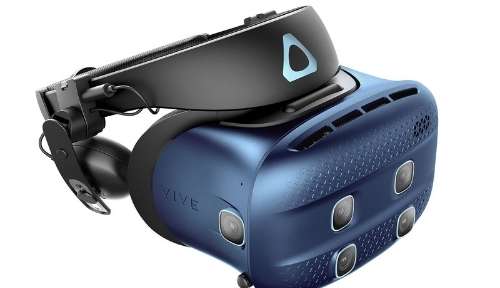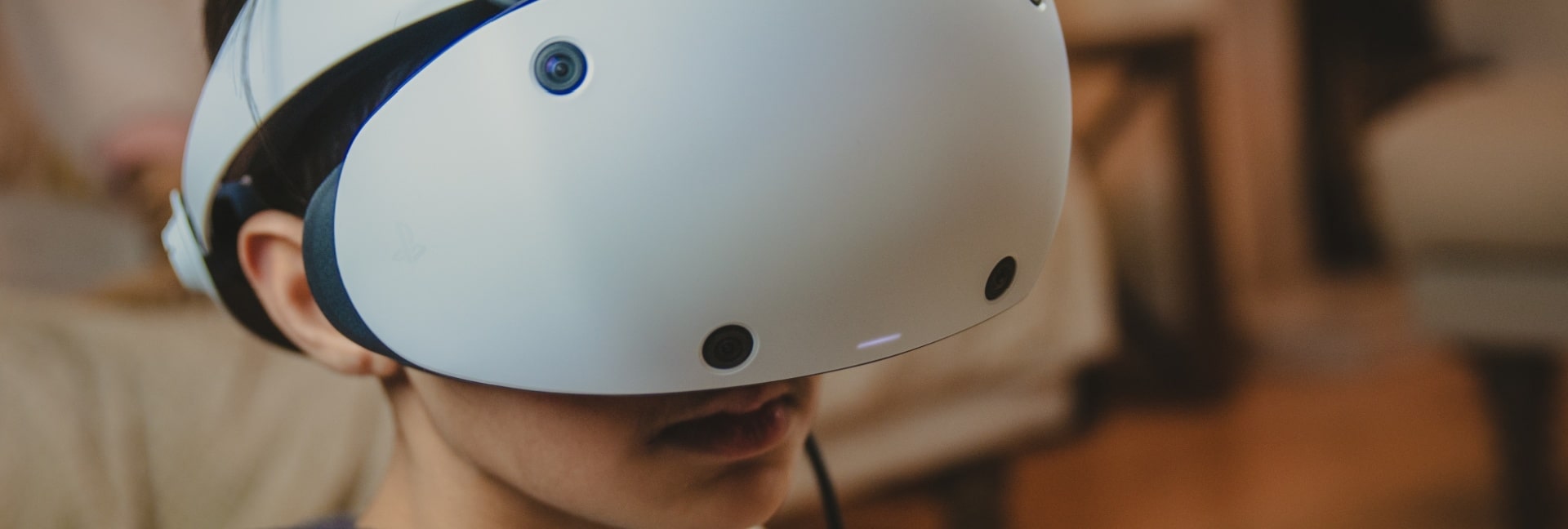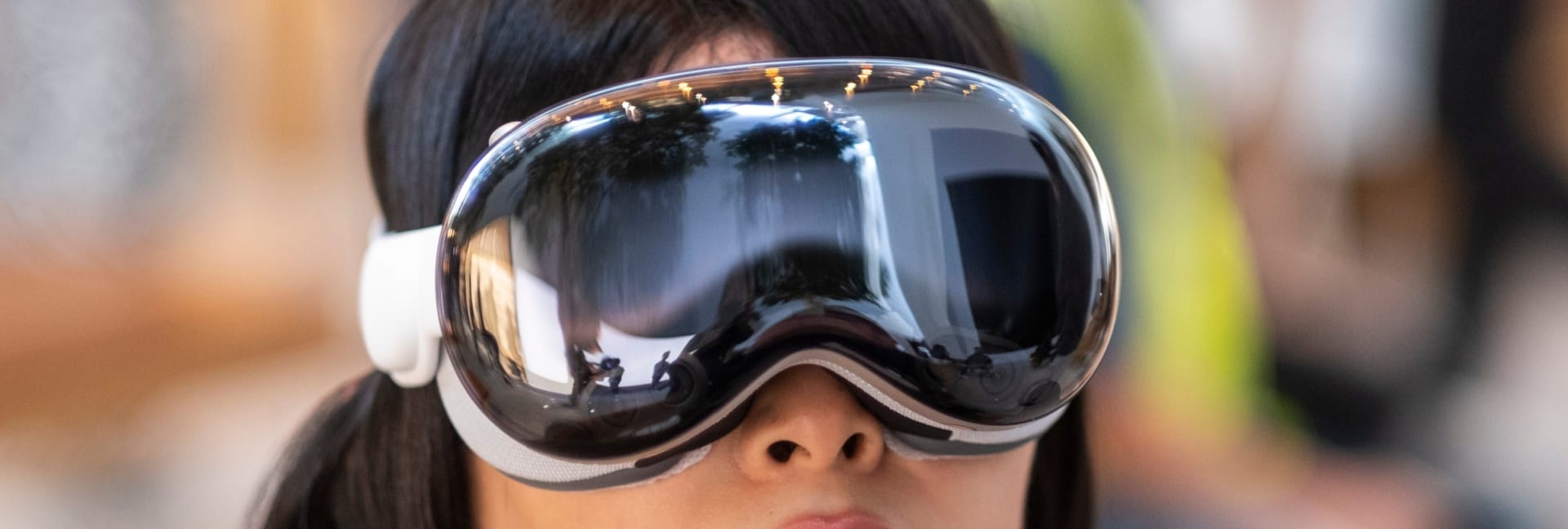Let’s be honest; most VR headsets produce an image that’s blurry with many visual imperfections. This is very unlike what you see on modern flat displays.
At the top end, where OLEDs and upcoming microLED displays live, resolutions and image reproduction are reaching the point where the human eye can’t detect the limits of the technology.
The same goes for high-end phones and tablets. The displays are getting so good that you can forget you’re looking at a screen in the first place.
VR display technology isn’t anywhere near that level of development.
While VR is very immersive as a total experience, once you start picking apart what your eye is actually seeing the problems are numerous.
Engineers are working hard to solve many of these problems, and I really believe we’re going to enter the next generation of VR display technology in the near future that solves most of these issues.
Why VR Display Quality is a Struggle
Think about what a VR headset actually is for a second and you’ll quickly realize that what we have today is a small technological miracle.
Inside a VR headset, you have one (or more) flat panel displays set just a few centimetres in front of your eyes.
Between your eyes and the display, there are two very sophisticated lenses that have to bend, squash and magnify the image on those screens so that it seems to wrap around your field of vision.
The image on the screen is specially distorted before being displayed so that the lens straightens it out in an optimal way, but no matter what you’re going to lose some base visual fidelity in this process.
That’s apart from the basic limitations of the display itself, which might look amazing and work perfectly used in a phone, but starts to break down visually inside the environment of a VR headset.
In general, there are three ways in which VR headset displays come short, so let’s unpack each one in turn.
Typical VR Image Imperfections
The first imperfection that’s probably the one most people know is the screen door effect. This is basically a fine grid that’s visible over the image at all times.
The reason this happens is that there are minuscule gaps between the actually lit portions of each pixel.
Since the image is somewhat magnified by the lenses in your HMD, this effect becomes more visible than it would otherwise be.
Not to mention that your eye is much closer to the screen than it would be in other use cases.
The next type of imperfection is known as “mura” from the Japanese word for “cloudy”. This look of cloudiness is the result of colour and brightness inconsistency between adjacent pixels.
Right now mura is something that affects OLED screens to a greater extent than LCD ones. However, OLEDs have other desirable aspects for use in VR headsets, so their use is relatively widespread.
The last imperfection is aliasing. This is the stair-step effect that affects mainly diagonal lines in rendered images. The visibility of aliasing is related to the pixels density and total resolution of the screen.
There’s more to aliasing than simple screen resolution of course. The native resolution of the rendered image is one factor as well, which is usually addressed by a software technique known as anti-aliasing.
What is a “Retina” Display?
Which brings us to the concept of a “retina” VR display. The term was coined by Apple and is still a trademark of theirs.
However, it’s become a common term for screens where the picture elements that make up a screen can’t be resolved by the human eye.
Apple uses the term for its phones and tablets when individual pixels can’t be seen at normal viewing distances. For phone and tablet screens, the point where it’s considered “retina” is around the 300 pixels-per-inch point.
In a VR headset, that measure isn’t completely applicable. Instead, the idea of pixels per degree is used instead.
What counts as a retina VR headset? The jury is perhaps out on the objective number here, but I’ve seen a figure of 60 pixels per degree put out there as the point where the human fovea won’t resolve more detail.
There are two ways to achieve this in principle; the first is to increase the pixel density of your display, which should also reduce the screen door effect and aliasing as a bonus. The second is to reduce the field of view, spreading the available pixels out over a smaller arc.
Achieving such a high pixel density is hard, expensive and comes with numerous technical challenges. Yet we are closing in on it, and there’s little doubt that goal will be reached sooner rather than later.
Headsets With The Best Clarity
How close are we to a headset with 60 pixels per degree? First, let’s get some perspective. The HTC Vive has approximately seven horizontal PPD. The Valve Index clocks in at around 13.
The Quest 2? About 20PPD. The soon to be released HP Reverb G2 is at the high end of the consumer space, with a 22PPD figure. The Pimax 8K also comes to around that figure.
The Future Of VR Image Quality
So when can we expect consumer VR headsets to triple their PPD numbers and cross that magic retina figure? That day may be closer than you think, for a few reasons.
In February of 2020, a press release by Japan Display Inc. announced a specialized VR LCD display.
This display boasts a pixel density of 1059 pixels per inch. Rather than being a repurposed panel from smartphones, it’s designed from the ground up to be a VR display unit.
We’re also seeing the introduction of new approaches to display technology. micro-LEDs are set to compete and eventually replace OLED displays.
These microLED displays promise truly insane pixel densities. An experimental microLED panel created by Mojo Vision boasted an incredible 14 000 pixels per inch.
Although the display itself is only 0.48mm across, that shows there is still plenty of room to play with pixel densities in future displays.
Certainly, enough triple the current PPD figures of top-end consumer products.
PPD numbers have doubled in around five years of VR development; I don’t think it’s going to take another five years to double again, which means that a retina headset, or something very close to it, probably isn’t that far off.







